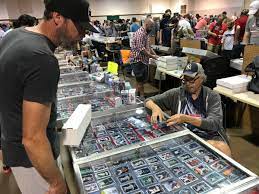Plastic model kits are a fantastic way to combine imagination, focus on aspect, and craftsmanship. However, for newbies, moving the planet of little components and complex recommendations can appear overwhelming. Whether you’re developing airplane, tanks, or sci-fi miniatures, these ideas and tricks will help make sure your model kits turn out polished and professional.
1. Make Your Workspace
Having an prepared and clean workspace is crucial. Use a well-lit region with room enough to disseminate your resources and parts. A self-healing chopping cushion can defend your surface while which makes it easier to take care of delicate pieces. Keep all of your instruments, such as for instance tweezers, stuff, and craft blades, within simple reach.
2. Examine the Directions Carefully
Before you obtain began, thoroughly go through the directions from starting to end. Pay close awareness of the portion numbers and assembly sequence. Some skilled modelers actually suggest color-coding the measures with highlighters for added clarity.
3. Invest in Appropriate Resources
Using the correct methods could make or separate your model-building experience. Stock through to essentials like:
Side blades: For precisely eliminating areas from sprues.
Accuracy tweezers: Perfect for little or hard-to-reach pieces.
Pastime knife: Perfect for cutting and washing edges.
Sandpaper or files: To smooth and refine portion sides after cutting.
Having high-quality instruments reduces the chance of mistakes and increases the general finish.
4. Test-Fit Before Gluing
Among the fantastic rules of assembling plastic design systems is always to “dry-fit” your parts before you stuff them. This screening stage allows you to identify and appropriate any positioning problems before completely attaching parts. In addition, it can help you avoid messy stick marks on apparent surfaces.
5. Use Stuff Modestly
Only a little goes a long way with model glue. Extortionate stuff may harm the plastic or build undesirable blobs. Use a tiny amount to the contact items and contain the elements together until they bond. Use solvent-based glue for tougher and solution seams.
6. Paint in Phases
If your model needs painting, consider pre-painting particular parts before assembly. This technique works well for little components or these difficult to achieve after the model is fully assembled. Make use of a great paintbrush or airbrush for an expert finish and use multiple thin layers for better coverage.
7. Be Patient
Model-building is really a test of patience as much as skill. Take your time with each step and avoid speeding through the process. Mistakes usually occur when you’re in a rush, so decrease and take pleasure in the craftsmanship.


